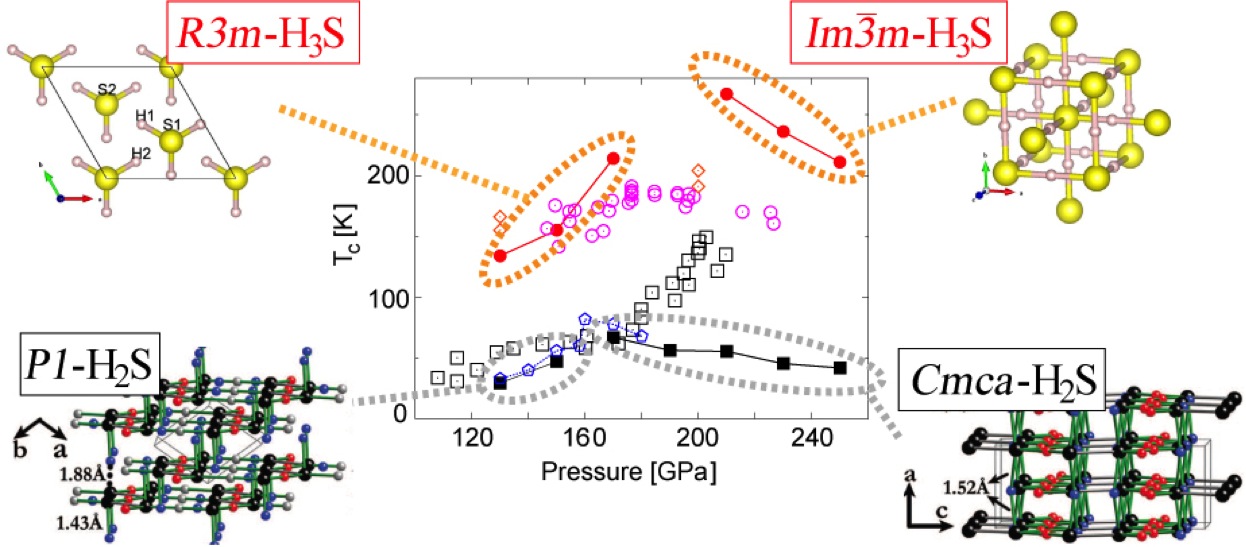 |
Japanese |
Tsuneyuki Research Group |
Research
"First-principles study on high-temperature superconductivity in hydrides"
Fig. Comparison of the calculated (black solid square and red solid circle) and experimentally observed (black open square and red open circle) Tc values for various structures. The open diamond and pentagons indicate theoretical estimations by other groups based on approximate formula.
The majority of the high-temperature superconductors (HTSC) belong to the unconventional superconductors, which cannot be well understood with the conventional phonon-mediated superconducting theory. On the other hand, there have been attempts to discover/synthesize new HTSC based on the conventional theory. According to the BCS formula, the superconducting transition temperature (Tc) is proportional to the phonon frequency. Since the phonon frequency is inversely proportional to the square root of the atomic mass, hydrogen compounds (hydrides) have been thought to be advantageous for superconductivity. However, many of the proposed compounds have been found to decompose into pure hydrogen and the residue in the experimental situation.
In the last December, a commonplace compound, sulfur hydride, have been found to be superconducting at extreme pressure, whose Tc is approximately 190 K. As this Tc breaks the previous Tc record of HTSC (160K in compressed Hg-cuprate) as well as the record for the phonon-mediated superconductors (40K in magnesium diboride), this report has immediately attracted much attention. However, what structural phase is actually superconducting is still unsettled because of fundamental difficulty in experimental measurement of the crystal structure under high pressure.
We then theoretically simulated possible Tcs for various proposed structures at experimental pressures from the first principles using the numerical method based on the density functional theory for superconductors("First-principles study on high-temperature superconductivity in hydrides")[1]. We found that, in the solid H2S phases, the resulting Tc is no more than half of the experimentally observed maximum Tc, whereas high Tc consistent with the experiment is realized in the H3S solid phases. Furthermore the theoretical maximum Tc was higher than the expeirmental maximum by about a few ten percent, which suggests that higher Tc may be realized by purifying the H3S phase and conditioning the external pressure carefully. We are now pursuing further clarification of what is occurring in the high-Tc phase and possible higher Tc with more precise calculations considering the phonon anharmonic effect and the zero-point oscillation effect of hydrogen atoms.
[1]R. Akashi, M. Kawamura, S. Tsuneyuki, Y. Nomura, and R. Arita, "First-principles study on crystal structure and pressure dependence of superconducting transition temperature in compressed sulfur hydrides" accepted in Physical Review B.

